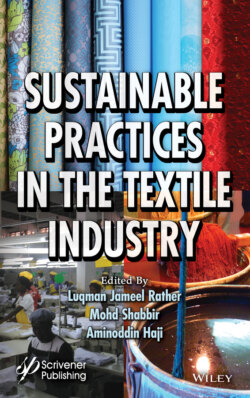Читать книгу Sustainable Practices in the Textile Industry - Группа авторов - Страница 23
1.7.1 Metallic Mordants
Оглавление1 i. Aluminum: Potash alum is the most widely used aluminum mordant for natural dyeing. Alum does not affect the color. The shade of dye depends on the amount of mordant. If deeper shades are required on fabric a greater amount of mordant is needed. Alum forms weak sulfuric acid when dissolved in water during the mordant process. This can result in acidic fumes which are corrosive, and irritating when inhaled.
2 ii. Iron: Iron salts in the form of ferrous sulfate (also known as green vitriol) are extensively used in dyeing and printing. Mordanting with iron salts produces a black or gray color to the fabric and reduces the darkness of other colors. Repeated high exposures may lead to nausea, vomiting, stomach pain, constipation and may affect liver.
3 iii. Copper: In copper mordanting, fabric treatment is done with the help of copper sulfate (blue vitriol). It is known for improving the light fastness of various dyed materials. High temperature operations such as boiling in dyeing generate fumes that have different health effects. Long-term exposure of copper can cause irritation, burn the skin, eyes and throat. It can cause headache, nausea, vomiting, diarrhea and abdominal pain.
4 iv. Tin: Tin mordant brightens the color. Stannous and stannic chloride are used as mordants. Stannic chloride is preferred for cotton. It causes severe skin burns and eye damage. It also causes skin allergies.
5 v. Chromium: Potassium dichromate is used in mordanting procedure and referred as Chrome. It is highly toxic and quite hazardous to health. Small amounts can cause contact dermatitis. It is a known carcinogen meaning it causes cancer.
